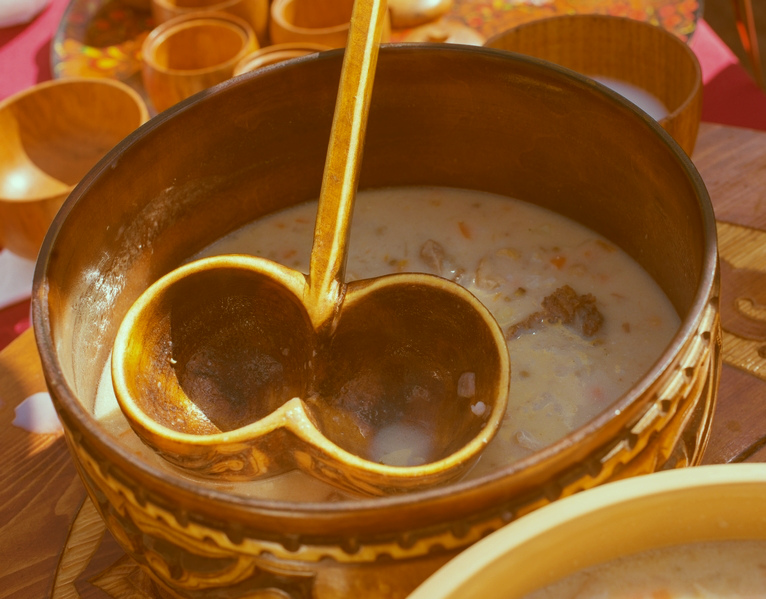Aigerim Musagazhinova, a historian and ethnographer, restored more than 200 unknown recipes of Kazakh dishes in “The mysteries around us” new program on the First Channel, Eurasia TV Channel, reports zakon.kz.

She began to learn Kazakh cuisine deeper, precisely the food anthropology, in the last five years. Photo credit: newstime.kz
“The mysteries around us” is a program about secrets and traditions of national cuisine, the origins of which go back centuries.
Currently, Musagazhinova calculates calories, the proportion of proteins, fats and carbs with the scientists of Kazakhstan Academy of Nutrition, and they consider Kazakh dishes to be completely healthy.
She has been studying the intangible cultural heritage of traditional culture, customs and national cuisine for 13 years. As she herself stated: people who believe in such stereotypes as “Kazakh dishes are poor” or that “Kazakh people used to eat only meat dishes”, are common, but still wrong.
“Our cuisine is diverse and healthy. It always combines milk, meat and cereals. Fish was often used in the western and southern regions, mushrooms, berries and herbs – in the west. Herbs were actually one of the main components of the Kazakh cuisine,” she says.

Nauryzkozhe (translated as spring festival) is a dish, which people usually cook during the Turkic Spring festival on March 21-23. It uncludes seven ingredients: water, salt, flour, milk, meat, wheat and butter. Photo credit: Facebook
The ethnographer has found dishes which are not cooked nowadays. For instance, there is such a dish as ukpe sut in the North region. It is cooked from the lungs of lamb or beef. The lung should be properly washed, filled with milk, boiled and then stewed.
“Kazakh people also had ritual dishes, which were cooked on special occasions. For instance, when a mother sent her son on a long journey, she used to cook zhauzhurek. It’s a boiled liver, wrapped in internal fat, which is cooked in milk. Prepared that way, the liver could be stored for up to seven days. So, the mother was sure her son won’t have been starving for seven days,” she adds, emphasizing dishes weren’t cooked for no reason – they have an interesting philosophy and history.

Zhauzhurek includes such ingredients as the liver of the sheep, abdominal fat around the stomach and milk. Photo credit: reciple.kz
Musagazhinova has also restored the recipe of the national drink kumys (fermented mare’s milk) in each country region. There are certain stages of its preparation and many technologies used. Today, there are more than 30-40 kinds of kumys in Kazakh cuisine.
There were two basic factors that influenced the formation of the national cuisine. The first is the nomadic culture, which implied the transition from one season to another and, consequently, some dishes were cooked in advance. The second one is natural and climatic conditions, which are different in each country’s region.
Source: Astana Times
